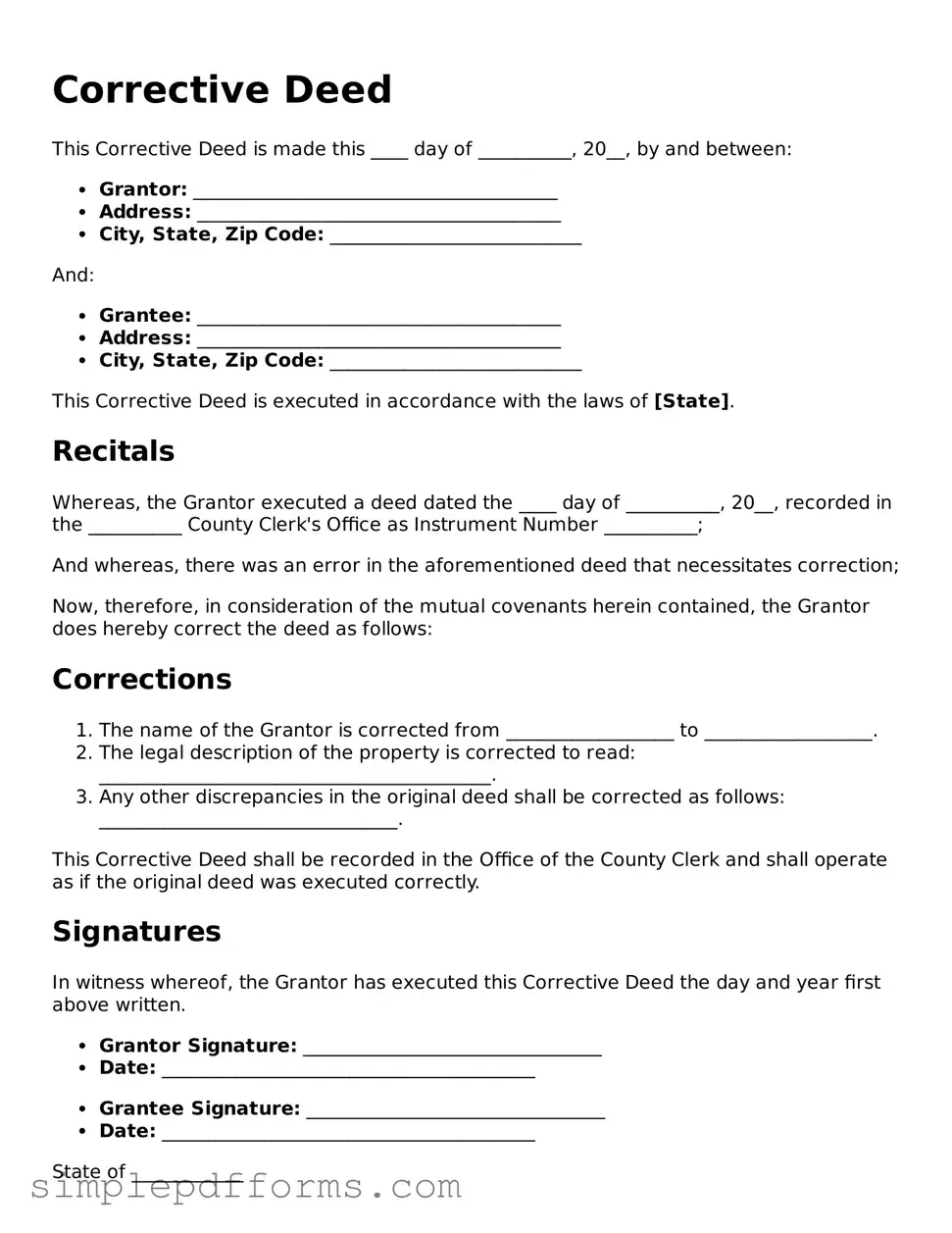Corrective Deed
This Corrective Deed is made this ____ day of __________, 20__, by and between:
- Grantor: _______________________________________
- Address: _______________________________________
- City, State, Zip Code: ___________________________
And:
- Grantee: _______________________________________
- Address: _______________________________________
- City, State, Zip Code: ___________________________
This Corrective Deed is executed in accordance with the laws of [State].
Recitals
Whereas, the Grantor executed a deed dated the ____ day of __________, 20__, recorded in the __________ County Clerk's Office as Instrument Number __________;
And whereas, there was an error in the aforementioned deed that necessitates correction;
Now, therefore, in consideration of the mutual covenants herein contained, the Grantor does hereby correct the deed as follows:
Corrections
- The name of the Grantor is corrected from __________________ to __________________.
- The legal description of the property is corrected to read: __________________________________________.
- Any other discrepancies in the original deed shall be corrected as follows: ________________________________.
This Corrective Deed shall be recorded in the Office of the County Clerk and shall operate as if the original deed was executed correctly.
Signatures
In witness whereof, the Grantor has executed this Corrective Deed the day and year first above written.
- Grantor Signature: ________________________________
- Date: ________________________________________
- Grantee Signature: ________________________________
- Date: ________________________________________
State of ____________
County of ____________
On this ____ day of __________, 20__, before me personally appeared ______________________, known to me to be the person described in and who executed the foregoing instrument and acknowledged that he/she executed the same.
Notary Public Signature: ________________________________
My Commission Expires: ________________________________
